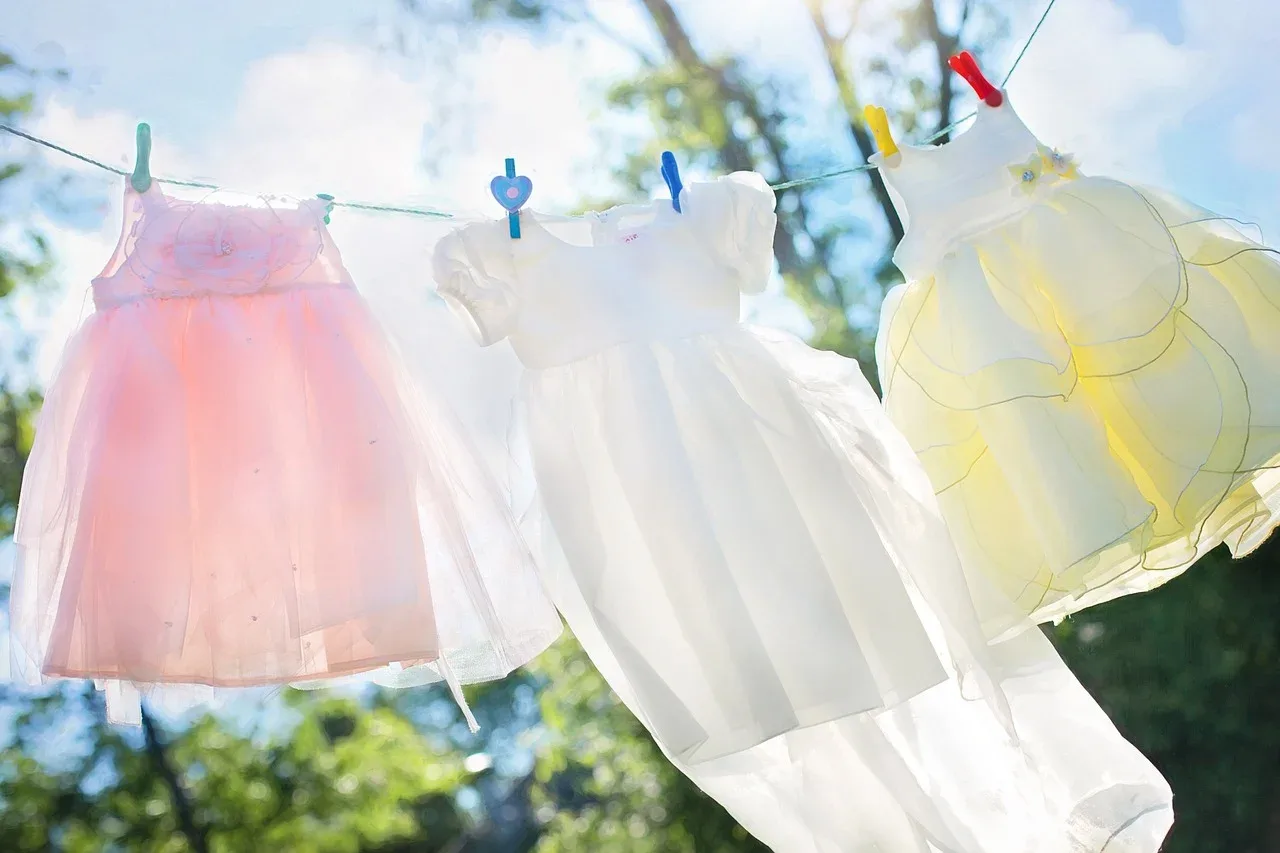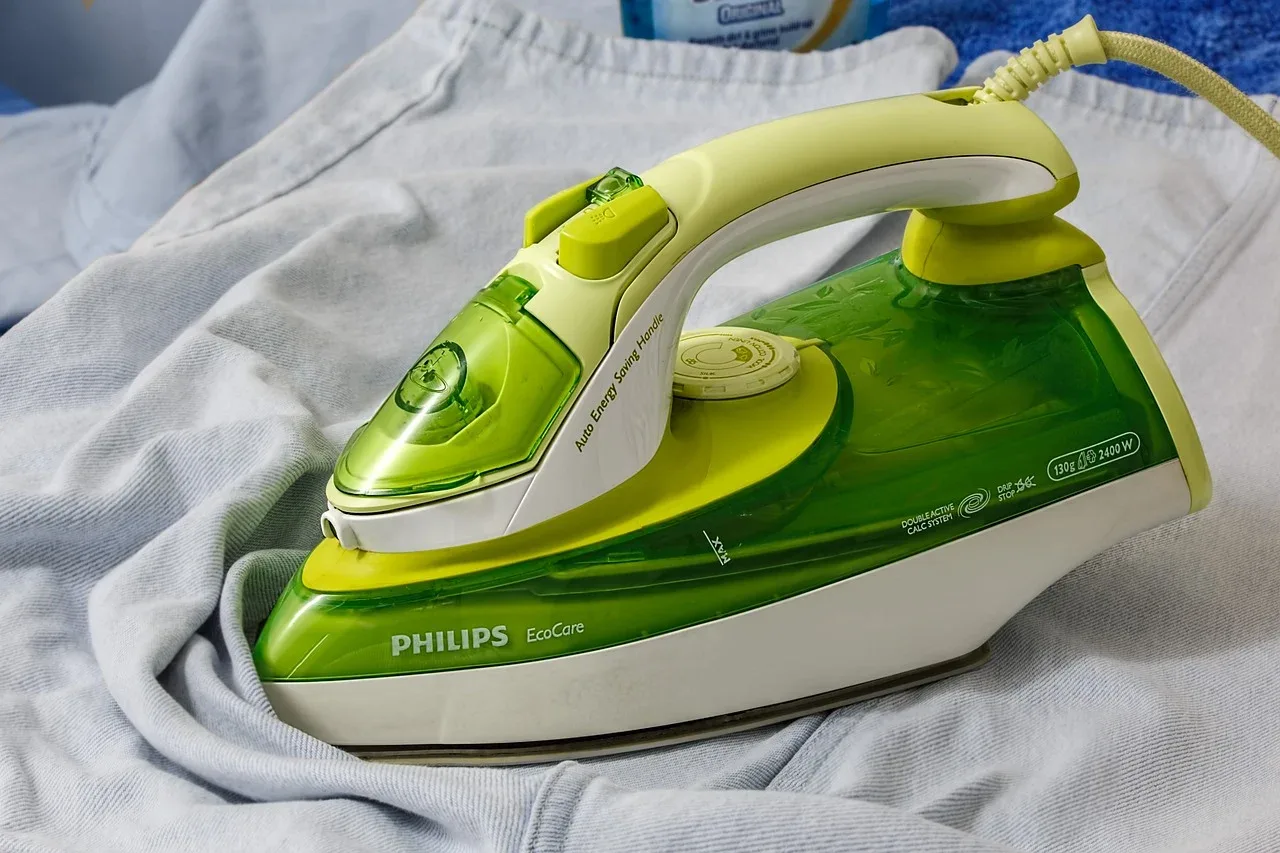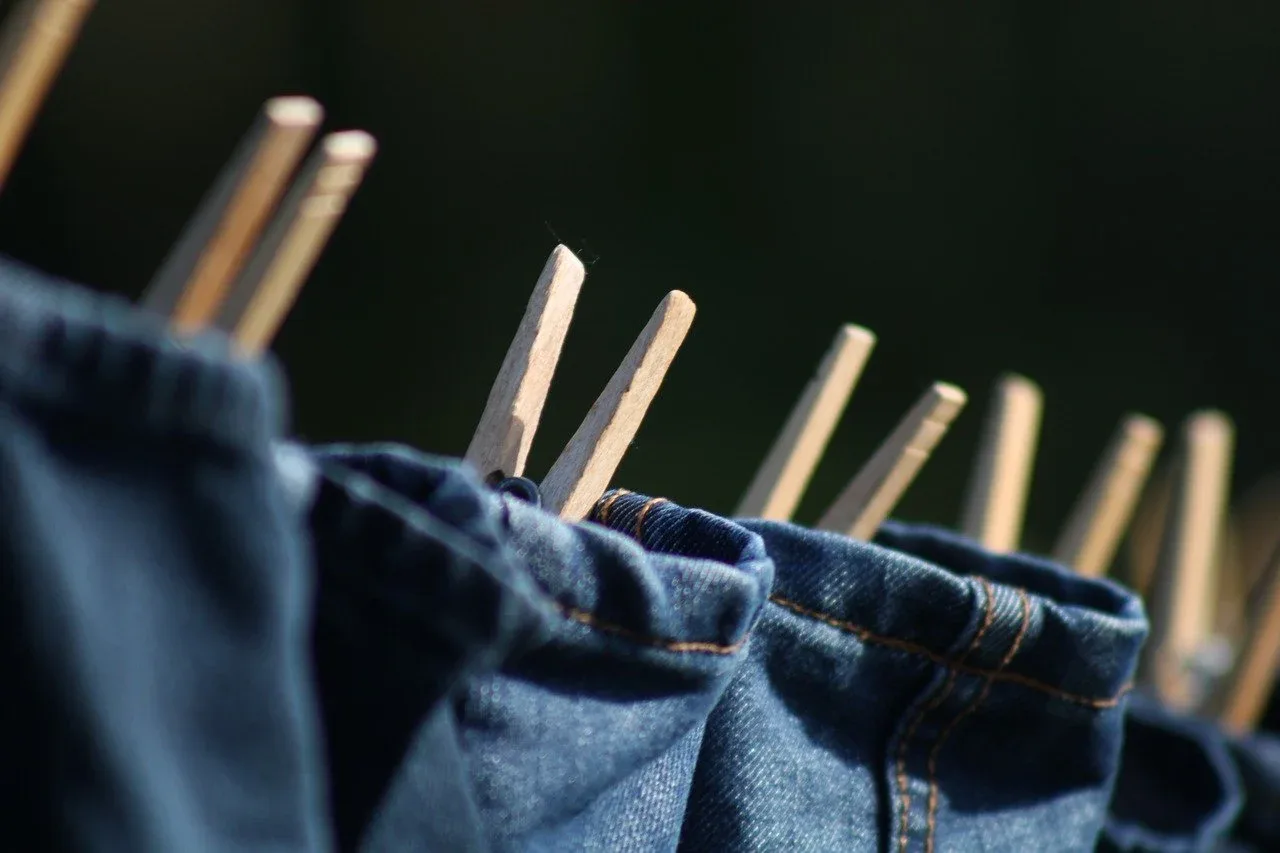If you’ve ever wondered how to effectively steam iron delicate fabrics without causing any damage, you’re not alone. Ironing can be a tricky task, especially when it comes to fragile materials. In this article, we’ll explore some expert tips and techniques to help you safely and successfully steam iron delicate fabrics. From choosing the right temperature and using protective barriers to ensuring proper steaming and avoiding common mistakes, we’ve got you covered. So, whether you’re dealing with silk, chiffon, or lace, read on to discover how to achieve wrinkle-free perfection while preserving the integrity of your delicate garments.
Understanding the Nature of Delicate Fabrics
Delicate fabrics refer to materials that are sensitive and require special care during the ironing process. These fabrics are often prone to wrinkling, damage, or alteration when exposed to high heat or pressure. It is important to understand the different types and characteristics of delicate fabrics as well as why they need special care.
Types of delicate fabrics
Delicate fabrics encompass a wide range of materials, each with its own unique properties. Some common types of delicate fabrics include silk, satin, lace, chiffon, organza, and cashmere. These fabrics are often lightweight, sheer, or have intricate designs, making them vulnerable to damage if not handled properly.
Characteristics of delicate fabrics
Delicate fabrics exhibit certain characteristics that require special attention during the ironing process. These fabrics are typically more prone to wrinkling than others, requiring gentle and careful ironing techniques. Additionally, delicate fabrics may have low heat tolerance and can easily get distorted, stretched, or burn if exposed to high temperatures.
Why delicate fabrics need special care
Delicate fabrics need special care because of their sensitivity to heat, pressure, and friction. The delicate nature of these fabrics necessitates the use of a steam iron, as it provides a gentler and more controlled method of removing wrinkles. Traditional dry irons or high heat settings can cause irreparable damage to delicate fabrics, such as scorching, discoloration, or fabric distortion.
Understanding the Basics of a Steam Iron
To effectively iron delicate fabrics, it is essential to have a good understanding of how a steam iron works and its basic components. A steam iron offers several advantages when it comes to ironing delicate fabrics.
Basic components of a steam iron
A steam iron consists of a water tank, a heating element, a thermostat, a soleplate, and steam vents. The water tank is used to store water that is converted into steam by the heating element. The thermostat controls the temperature of the iron, and the soleplate is the flat surface that comes into contact with the fabric. The steam vents release steam onto the fabric, aiding in the removal of wrinkles.
How a steam iron works
When the steam iron is turned on, the heating element heats up the water in the tank, converting it into steam. The thermostat regulates the temperature of the soleplate, ensuring it reaches the desired level for the fabric being ironed. As the iron is moved across the fabric, steam is released through the steam vents, moistening the fabric and making it easier to remove wrinkles.
Advantages of using a steam iron on delicate fabrics
Using a steam iron on delicate fabrics offers several advantages. The steam released by the iron helps to relax the fabric fibers, making it easier to eliminate wrinkles without applying excessive pressure. The moist heat produced by the steam iron is gentler on delicate fabrics, reducing the risk of damage. Additionally, the steam can also be used to freshen up fabrics that may have a mild odor, such as silk or cashmere.

Before You Start: Tools and Materials Needed
Before beginning the ironing process, it is important to gather the necessary tools and materials to ensure efficient and effective ironing of delicate fabrics. From choosing the right steam iron to selecting an ironing board and ironing accessories, each item plays a crucial role in achieving satisfactory results.
Choosing the right steam iron
When selecting a steam iron for delicate fabrics, there are a few key factors to consider. Look for an iron with adjustable temperature settings, as different fabrics require different levels of heat. It is also beneficial to choose an iron with a steam function that can produce a continuous flow of steam. This feature allows for easier removal of wrinkles from delicate fabrics.
Selecting an ironing board
An ironing board provides a stable surface for ironing and should be chosen with care. Look for an ironing board with a sturdy frame and a durable cover that will withstand heat and steam. The size of the ironing board should be suitable for the fabrics you typically iron, ensuring there is enough space to lay them flat without any creases or folds.
Need for ironing accessories
Ironing accessories can enhance the ironing process and help achieve better results. Some useful accessories include a spray bottle for dampening fabrics, a pressing cloth or ironing pad for protecting delicate fabrics, and a fabric brush for removing lint or hair. These accessories can aid in achieving smooth and wrinkle-free results on delicate fabrics.
Choosing the right water for steam iron
The type of water used in a steam iron can impact its performance and longevity. It is recommended to use distilled water instead of tap water to prevent mineral buildup and clogging of the iron’s steam vents. Distilled water is free from impurities and minerals that can leave residue on delicate fabrics. Regularly using distilled water can help maintain the efficiency and lifespan of the steam iron.
Preparing the Delicate Fabric for Ironing
Before ironing delicate fabrics, proper preparation is essential to ensure optimal results and prevent damage. This includes cleaning the fabric, checking the fabric labels for ironing instructions, and making sure the fabric is slightly damp.
Cleaning the fabric
It is important to start with clean fabric before ironing, as dirt, oils, or stains can become set into the fabric when exposed to heat. Follow the fabric’s care instructions for washing or dry cleaning to remove any dirt or odors. Once the fabric is clean, it can be prepared for ironing.
Checking fabric labels for ironing instructions
Fabric labels provide valuable information about the care and maintenance of the fabric. Before ironing, check the fabric labels for any specific ironing instructions. Some delicate fabrics may require low heat settings or the use of a pressing cloth to protect the fabric. Following the instructions on the fabric label will help prevent damage and ensure successful ironing.
Making sure the fabric is slightly damp
Delicate fabrics are easier to iron when they are slightly damp. This can be achieved by lightly misting the fabric with water from a spray bottle. The moisture helps relax the fabric fibers, making it easier to remove wrinkles. However, it is important to avoid saturating the fabric as excessive moisture can cause water marks or shrinkage. The fabric should feel slightly damp to the touch before ironing.

Setting Up the Ironing Area
Creating a well-organized and suitable environment for ironing delicate fabrics is crucial for efficient and safe ironing. Prepping the ironing board, setting up the steam iron, and organizing ironing accessories are key steps in setting up the ironing area.
Prepping the ironing board
Before ironing, make sure the ironing board is clean and free from any dirt or debris. If the ironing board cover is worn or stained, it may be beneficial to replace it to ensure smooth and wrinkle-free ironing. Additionally, adjust the height of the ironing board to a comfortable level for effective ironing.
Setting up the steam iron
Ensure the steam iron is properly set up and ready for use. Fill the water tank with distilled water up to the recommended level. Take care not to overfill the tank, as excess water can leak or cause the iron to spit water onto the fabric. Attach the iron’s power cord securely and plug it into a safe and convenient outlet. Allow the iron to heat up to the desired temperature according to the fabric being ironed.
Organizing your ironing accessories
Having your ironing accessories within reach can make the ironing process go smoothly. Place the spray bottle filled with water nearby for easy access when dampening the fabric. Keep the pressing cloth or ironing pad handy to protect delicate fabrics while ironing. Position the fabric brush within reach to quickly remove any lint or hair that may accumulate on the fabric during the ironing process.
Adjusting the Temperature of the Steam Iron
Proper temperature control is essential when ironing delicate fabrics to prevent damage and achieve satisfactory results. Understanding how to judge the right temperature, set it on the steam iron, and the importance of temperature control is crucial for successful ironing.
Judging the right temperature for different fabrics
Different fabrics require different heat settings to achieve optimal results without causing damage. Some delicate fabrics, like silk or chiffon, require lower heat settings, while others, like cotton or linen, can tolerate higher temperatures. Refer to the fabric’s care label or an ironing temperature guide for guidance on the appropriate temperature range for the specific fabric being ironed.
Setting the temperature on the steam iron
Most steam irons have adjustable temperature settings to accommodate various fabrics. Set the iron to the desired temperature range indicated for the fabric being ironed. Allow the iron to reach the selected temperature before beginning to iron. It may be helpful to start with a lower temperature and gradually increase if needed, especially when ironing more delicate fabrics.
Importance of temperature control in preserving delicate fabrics
Temperature control is crucial when ironing delicate fabrics to prevent damage such as scorching, burning, or fabric distortion. Using excessive heat can permanently alter the fabric’s texture or color, while insufficient heat may not effectively remove wrinkles. Achieving the correct temperature ensures optimal ironing results and prolongs the life of delicate fabrics.

The Ironing Process
The ironing process involves several steps to effectively remove wrinkles and achieve smooth, wrinkle-free fabric for delicate materials. These steps include spraying the fabric, pressing the iron, moving the iron, steaming the fabric, and ironing different parts of the clothing.
Spraying the fabric
Before ironing, lightly mist the slightly damp fabric with water from a spray bottle. This provides additional moisture, making it easier to remove wrinkles and achieve a smooth finish. The fabric should be slightly damp but not soaking wet. The water helps relax the fabric fibers and aids in the removal of wrinkles.
Pressing the iron
Hold the iron firmly and press it onto the fabric. Apply gentle pressure, allowing the heat and steam to penetrate the fabric. Hold the iron in place for a few seconds, ensuring the fabric comes into contact with the soleplate and steam vents. Lift the iron and move to the next section, overlapping the previous area slightly to ensure uniform ironing.
Moving the iron
To effectively remove wrinkles, move the iron slowly in straight lines, following the natural grain and direction of the fabric. Avoid vigorous or back-and-forth motions that can stretch or distort delicate fabrics. Take your time to ensure each section of the fabric is evenly ironed, paying close attention to areas with stubborn wrinkles or intricate details.
Steaming the fabric
As you move the iron across the fabric, the steam vents release steam onto the fabric. The steam helps in loosening the wrinkles and aids in achieving a smooth finish. The continuous flow of steam can be particularly beneficial when dealing with delicate fabrics, as it ensures a gentle and controlled application of moisture and heat.
Ironing different parts of the clothing
When ironing clothing made from delicate fabrics, such as blouses or dresses, it is important to pay attention to specific parts. Start with the collar, cuffs, or any intricate details, ironing them carefully to ensure they retain their shape. Iron the front and back of the garment, taking care around buttons or embellishments. Finally, iron the sleeves and any remaining areas, always moving the iron smoothly and unhurriedly.
Ironing Special Items
Certain special items require extra care and attention when ironing due to their unique features or embellishments. Items such as silk or satin, lace, and fabrics with pleats or ruffles have specific ironing techniques to ensure optimal results without damaging the delicate materials.
Ironing silk or satin
Silk and satin are delicate fabrics that require special care when ironing. Use a low to medium heat setting and a pressing cloth to protect the fabric. Gently glide the iron over the fabric, avoiding prolonged pressure in one spot. For satin, iron the fabric on the reverse side whenever possible to prevent shine or discoloration.
Ironing lace and other embellishments
Lace and fabrics with embellishments should be handled with care during the ironing process. Place a pressing cloth or ironing pad over the lace or embellishments to prevent snagging or damage. Use a low heat setting and gently press the iron onto the fabric, being cautious around any delicate details. If needed, lightly steam the lace to help restore its shape and remove wrinkles.
Ironing items with pleats or ruffles
Pleated or ruffled fabrics require extra attention to maintain their crisp appearance. Begin by ironing the fabric in between the pleats or ruffles, using a low to medium heat setting. Gently press the iron on the fabric, moving it carefully to avoid flattening the pleats or ruffles. If necessary, use a hand steamer to restore any lost fullness or shape after ironing.
After Ironing: Proper Handling and Storage
Once the delicate fabrics have been ironed, it is important to handle and store them properly to maintain their freshly ironed appearance and prevent wrinkles from reoccurring. Proper cooling down, storage techniques, and care for the steam iron are essential in preserving the quality of the fabrics.
Cooling down the fabric
After ironing, allow the fabric to cool down completely before handling or storing it. This helps to set the fabric fibers and prevents new wrinkles from forming. Lay the ironed fabric flat on a clean surface or drape it over a hanger, ensuring it has enough space to cool down without being folded or creased.
Storing ironed clothes
When storing ironed clothes made from delicate fabrics, it is important to choose the appropriate storage method. Hanging the garments on padded hangers can help preserve their shape and reduce the risk of wrinkles. Avoid overcrowding the closet or storage area, as tightly packed clothes can become wrinkled or lose their freshly ironed appearance.
Storing the steam iron
Properly storing the steam iron prolongs its life and ensures its availability for future use. Allow the steam iron to cool down completely before storing. Empty any remaining water from the water tank to prevent mineral buildup or leakage. Store the steam iron in an upright position, preferably in a designated storage compartment or with a protective cover to prevent dust or damage.
Troubleshooting and Tips
Ironing delicate fabrics can sometimes present challenges or require additional care. Here are some troubleshooting tips for common issues that may arise, along with additional tips to enhance your ironing experience.
What to do if fabric sticks to the iron
If fabric sticks to the iron during the ironing process, do not pull or force it off. Instead, turn off the iron and allow it to cool down. Gently lift the fabric away from the soleplate using a pair of tweezers or your fingers. Take care to avoid stretching or tearing the fabric. Once the fabric is removed, check for any damage or residue on the soleplate and clean it if necessary before continuing to iron.
Handling water drips from the steam iron
Some steam irons may occasionally drip water, which can lead to unsightly water marks on delicate fabrics. To prevent this issue, ensure the iron is not overfilled with water, as excess water can cause drips. If water drips onto the fabric during ironing, immediately lift the iron off the fabric and gently blot the area with a clean, absorbent cloth or towel. Avoid rubbing the fabric, as it may spread the moisture or cause damage. Allow the fabric to dry completely before continuing to iron.
Fixing shiny marks caused by ironing
Shiny marks on delicate fabrics can occur when excessive heat or pressure is applied during ironing. To fix these shiny marks, place a clean, dry pressing cloth or ironing pad over the affected area. Apply a steam iron over the cloth, using gentle pressure and moving the iron slowly. The heat and steam will help restore the fabric’s texture and remove the shine. Alternatively, lightly steaming the fabric without direct contact from the iron may also help reduce shiny marks.
Incorporating distilled water for better ironing results
Using distilled water in the steam iron can yield better ironing results, specifically for delicate fabrics. Distilled water is free from impurities and minerals that can leave residue on fabrics, resulting in cleaner and smoother ironing. Regularly incorporating distilled water in the steam iron can help maintain its performance and prevent clogging of the steam vents. Remember to refill the water tank with distilled water when needed to maintain optimal steam production.